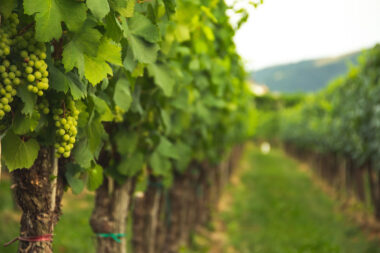Introduction
Rapid urbanization has significantly reduced available arable land, necessitating the adoption of sustainable, space-efficient agricultural practices. Sky gardens and vertical farms integrate greenery and agricultural production into urban landscapes, utilizing vertical space to enhance food security, environmental sustainability, and urban livability. These innovative farming practices leverage controlled-environment agriculture technologies, advanced architectural designs, and efficient resource management systems.
Architectural and Technical Design
Sky Gardens
Sky gardens, also known as rooftop gardens or green roofs, involve cultivating plants, flowers, vegetables, or herbs on building rooftops or terraces. Their architectural design integrates the following key components:
- Structural Reinforcement: Incorporates load-bearing capacity assessments, structural retrofits using steel reinforcements, and lightweight construction methods to accommodate additional load from soil, plants, and water.
- Waterproofing and Drainage Systems: Employs multi-layer waterproof membranes, root barriers, geotextile fabrics, and drainage mats to prevent water penetration and structural damage.
- Substrate and Soil Medium: Utilizes engineered, lightweight soil substrates, typically a mixture of organic matter, mineral aggregates, and lightweight inert materials such as expanded clay or perlite, facilitating effective plant growth and minimal structural load.
- Automated Irrigation Systems: Integrates advanced drip irrigation techniques, moisture sensors, and automated controllers that precisely regulate watering schedules, conserving water and ensuring optimal hydration.
Vertical Farming
Vertical farms involve stacking growing platforms vertically within urban buildings or dedicated structures, providing controlled environmental conditions optimized for crop growth:
- Hydroponic, Aeroponic, and Aquaponic Systems:
- Hydroponics: Soil-less growing using nutrient-rich water solutions circulated through roots.
- Aeroponics: Roots are suspended in air, intermittently misted with nutrient solutions, optimizing oxygen availability.
- Aquaponics: Combines aquaculture (fish farming) with hydroponics, utilizing nutrient-rich wastewater from fish tanks to nourish plants, creating a symbiotic system.
- LED Lighting Systems: Implements wavelength-specific LED grow lights tailored to crop species, enhancing photosynthesis, accelerating growth cycles, and optimizing energy efficiency.
- Climate Control: Employs automated HVAC systems integrated with sensors to regulate temperature, humidity, CO₂ levels, and airflow, creating ideal crop growing conditions year-round.
- Automated Monitoring Systems: Uses IoT-enabled sensor networks that track environmental parameters, crop health, nutrient concentrations, and growth metrics in real-time, enabling data-driven decision-making.
Components Involved in Technical Design for Sky Gardens and Vertical Farming
Sky Gardens
1. Structural Reinforcement Components:
- Steel Reinforcements: High-tensile steel beams and supports to distribute structural loads evenly.
- Lightweight Concrete or Composite Decking: Minimizes structural load while providing robust support.
- Load-bearing Insulation Boards: Lightweight materials providing insulation and support beneath planting layers.
2. Waterproofing and Drainage Systems:
- Membrane Waterproofing: Synthetic membranes (EPDM, PVC, TPO) prevent moisture infiltration.
- Drainage Mats and Channels: Engineered plastic or composite layers facilitating efficient water drainage.
- Root Barriers: Protective geotextile layers prevent plant roots from penetrating and damaging underlying structures.
3. Soil Substrate and Growing Medium:
- Engineered Soil Mix: Lightweight substrates composed of expanded clay, perlite, vermiculite, peat moss, and compost.
- Geotextile Separation Layer: Prevents soil erosion and maintains structural integrity.
3. Irrigation Systems:
- Drip Irrigation: Water-efficient drip emitters providing controlled moisture distribution.
- Moisture and Rain Sensors: IoT-enabled sensors adjusting irrigation schedules based on real-time data.
4. Plant Selection:
- Native and Adaptive Species: Selected for drought tolerance, lightweight root systems, and suitability to urban microclimates.
- Air-Purifying Vegetation: Specific plants (e.g., succulents, grasses, leafy vegetables) optimized for CO₂ absorption and air purification.
4. Environmental and Climate Control Systems:
- Integrated Temperature Sensors: Real-time monitoring and automatic regulation to maintain optimal plant growth conditions.
- Windbreak and Shade Structures: Structural elements designed to mitigate harsh environmental impacts.
Components Involved in Technical Design of Vertical Farming:
1. Cultivation Systems:
- Hydroponics:
- Nutrient solution tanks
- Nutrient pumps and distribution channels
- Root support media (e.g., foam cubes, clay pellets)
- Aeroponics Systems:
- High-pressure misting nozzles
- Nutrient solution reservoirs
- Automated misting controllers and timers
- Aquaponic Systems:
- Integrated fish tanks for nutrient-rich wastewater production
- Bio-filtration systems maintaining balanced nutrient cycles
- Pump and filtration modules ensuring continuous circulation
2. Lighting Systems:
- LED Grow Lights: Tunable spectrum LEDs optimized for plant photosynthesis (red, blue, far-red wavelengths).
- Light Sensors: IoT-connected photometric sensors for precise intensity management and energy optimization.
3. Environmental Control Systems:
- HVAC Systems: Automated systems maintaining consistent air temperature, humidity, and CO₂ concentrations.
- Air Circulation Fans: Ensuring consistent airflow, enhancing photosynthesis efficiency, and reducing plant disease risk.
4. Nutrient Management Systems:
- Automated Nutrient Dosers: Precision-controlled nutrient injection systems ensuring optimal plant nutrition.
- Real-Time Nutrient Sensors: Continuously measuring pH, EC (Electrical Conductivity), and nutrient concentration for dynamic adjustments.
5. Monitoring and Automation Systems:
- IoT-enabled Environmental Sensors: Monitoring temperature, humidity, CO₂, nutrient levels, and lighting.
- Machine Learning Algorithms: Predictive analytics to optimize growing conditions, resource allocation, and harvest scheduling.
5. Structural and Architectural Integration:
- Stacked Vertical Shelving Units: Space-efficient cultivation platforms typically made from corrosion-resistant materials like aluminum or stainless steel.
- Modular Building Systems: Prefabricated and scalable structural units allowing flexible expansion and rapid deployment.
6. Climate Control and HVAC Systems:
- HVAC Systems: Automated heating, ventilation, and air conditioning systems maintaining precise internal conditions.
- Humidity Controllers: Sensors and actuators maintaining optimal humidity levels to ensure plant growth and reduce pest susceptibility.
7. Monitoring and Automation Technologies:
- IoT-enabled Sensor Networks: Integration of sensors tracking temperature, humidity, nutrient concentration, and plant health.
- AI-driven Software Platforms: Data analytics software for crop monitoring, yield prediction, and resource management.
Technological Implementation
Vertical farming and sky gardens require advanced technological integration to optimize production efficiency and sustainability. This step-by-step implementation includes:
Step 1: Site Selection and Structural Assessment
- Evaluate buildings or locations based on structural integrity, accessibility, sunlight exposure, and local climate conditions.
- Conduct structural load analysis to determine required reinforcements.
Step 2: Structural Reinforcement and Preparations
- Retrofit structures using steel reinforcement and lightweight building materials.
- Implement waterproofing layers, root barriers, and drainage systems to secure infrastructure.
Step 3: Installation of Cultivation Systems
- Install hydroponic, aeroponic, or aquaponic systems, including nutrient reservoirs, pumps, and misting systems.
- Establish growing platforms and vertical shelving to maximize space utilization.
Step 4: Integration of Lighting Systems
- Deploy LED grow lighting systems with adjustable wavelengths and intensity controls.
- Optimize lighting arrangements to ensure uniform coverage and energy efficiency.
Step 5: Climate Control Installation
- Set up automated HVAC systems to precisely manage temperature, humidity, airflow, and CO₂ concentrations.
- Incorporate thermal sensors and humidity monitors to maintain ideal environmental conditions.
Step 6: Implementation of Monitoring and Automation
- Deploy IoT-enabled sensors for continuous tracking of environmental factors, nutrient levels, plant growth, and health indicators.
- Integrate robotic systems for automated planting, harvesting, and routine maintenance activities.
Step 7: Data Analytics and AI Integration
- Utilize machine learning algorithms to analyze sensor data, optimize resource use, and forecast crop yields.
- Implement predictive analytics for proactive pest management and disease prevention.
Step 8: Operational Training and Maintenance Protocols
- Train personnel in operational procedures, system management, and emergency response.
- Establish preventive maintenance schedules for all technical components and automated systems.
Benefits of Sky Gardens and Vertical Farming
Environmental Benefits:
- Air Quality Improvement: Reduction of pollutants, particulate matter, and urban CO₂ through increased vegetative coverage.
- Heat Island Mitigation: Green coverage minimizes urban heat absorption, reducing energy demands for cooling systems.
- Water Efficiency: Significant water reduction compared to traditional agriculture via controlled-environment systems and recirculating irrigation systems.
Economic and Social Benefits:
- Urban Food Security: Reliable local food production reducing reliance on distant supply chains.
- Job Creation: Creation of new jobs in technology-driven agriculture, including skilled positions in horticulture, engineering, automation, and data analytics.
- Enhanced Urban Aesthetics and Livability: Increased green spaces promoting improved mental health, community interaction, biodiversity, and elevated property values.
Technology Involved in Sky Gardens and Vertical Farming
Sky gardens and vertical farms utilize an array of advanced technological systems and components to ensure sustainable, efficient, and productive agricultural practices in urban environments. The key technological aspects include:
1. Structural and Material Technologies:
- High-Performance Composites:
Advanced lightweight materials such as fiber-reinforced polymers (FRP), carbon fiber, and composites provide structural strength with minimal weight. - Engineered Soil Substrates:
Specialized substrates composed of perlite, expanded clay aggregates, coconut coir, peat moss, and biochar enhance plant growth while reducing structural load.
2. Cultivation Technologies:
- Hydroponics Systems:
Employ automated nutrient delivery using pumps, nutrient reservoirs, and precision dosing equipment, minimizing water use and enhancing nutrient absorption efficiency. - Aeroponics Systems:
High-pressure misting nozzles combined with automated nutrient cycling systems deliver precise nutrients directly to roots suspended in air. - Aquaponics Systems:
Integrated fish farming systems use automated biofilters and water circulation pumps, enabling nutrient-rich water recycling for plant cultivation.
3. Lighting and Photobiological Systems:
- Advanced LED Grow Lights:
Utilize tunable LED lighting with precise wavelengths (red, blue, white, UV, and far-red spectrums) tailored to optimize plant growth and photosynthetic efficiency. - Light Management Software:
Automated control software adjusts lighting schedules, intensities, and wavelengths based on real-time plant growth data and environmental conditions.
4. Environmental and Climate Control Technologies:
- Automated HVAC Systems:
Precisely control temperature, humidity, CO₂ concentrations, and airflow, integrating sensors and actuators to maintain optimal plant growth conditions continuously. - Active Thermal Management:
Employ heat exchangers, phase-change materials, and radiant barriers to regulate internal temperatures efficiently, reducing energy demands.
5. Sensor and IoT Integration:
- Real-Time Environmental Sensors:
Integrated sensors measuring soil moisture, temperature, humidity, CO₂ levels, nutrient concentrations, and light intensity to optimize conditions dynamically. - Wireless Sensor Networks (WSNs):
IoT-based wireless networks enabling real-time data collection, remote monitoring, and system management through centralized platforms.
6. Robotics and Automation:
- Automated Robotic Systems:
Utilize robotic arms and autonomous guided vehicles (AGVs) for planting, harvesting, pruning, and facility maintenance, increasing efficiency and reducing labor costs. - Automated Irrigation and Nutrient Systems:
Programmable irrigation and nutrient delivery systems automatically adjust water and nutrient levels based on sensor feedback and crop needs.
7. Data Analytics, AI, and Machine Learning:
- AI-driven Analytics Platforms:
Machine learning algorithms analyze collected data to predict crop yields, optimize resource allocation, and proactively detect plant diseases or nutrient deficiencies. - Predictive Modeling:
Utilize software tools (Python, MATLAB, and R) for developing predictive growth models, forecasting harvest timelines, and optimizing planting cycles.
8. Energy and Resource Efficiency Systems:
- Renewable Energy Integration:
Implementation of solar panels, wind turbines, and energy storage solutions to offset energy consumption from lighting, HVAC, and automated systems. - Water Recycling and Purification Systems:
Closed-loop water recycling systems utilizing filtration, UV sterilization, and reverse osmosis technologies to minimize water consumption and eliminate wastewater discharge.
9. Emergency Management and Safety Systems:
- Structural Health Monitoring (SHM):
Deployment of vibration, strain, and pressure sensors for continuous structural monitoring to ensure safety and structural integrity. - Automated Emergency Response:
Systems designed to detect abnormalities such as leaks, power outages, or structural stress, initiating immediate automated response protocols.
Integrating these advanced technologies into sky gardens and vertical farming facilitates the achievement of sustainability goals, enhances operational efficiency, and ensures the long-term viability of urban agriculture solutions.
Conclusion
Sky gardens and vertical farming represent critical advancements in urban agriculture, addressing sustainability challenges posed by urbanization. Through strategic architectural integration, advanced technological systems, and supportive policy frameworks, these practices significantly enhance urban sustainability, food security, and overall quality of life.



